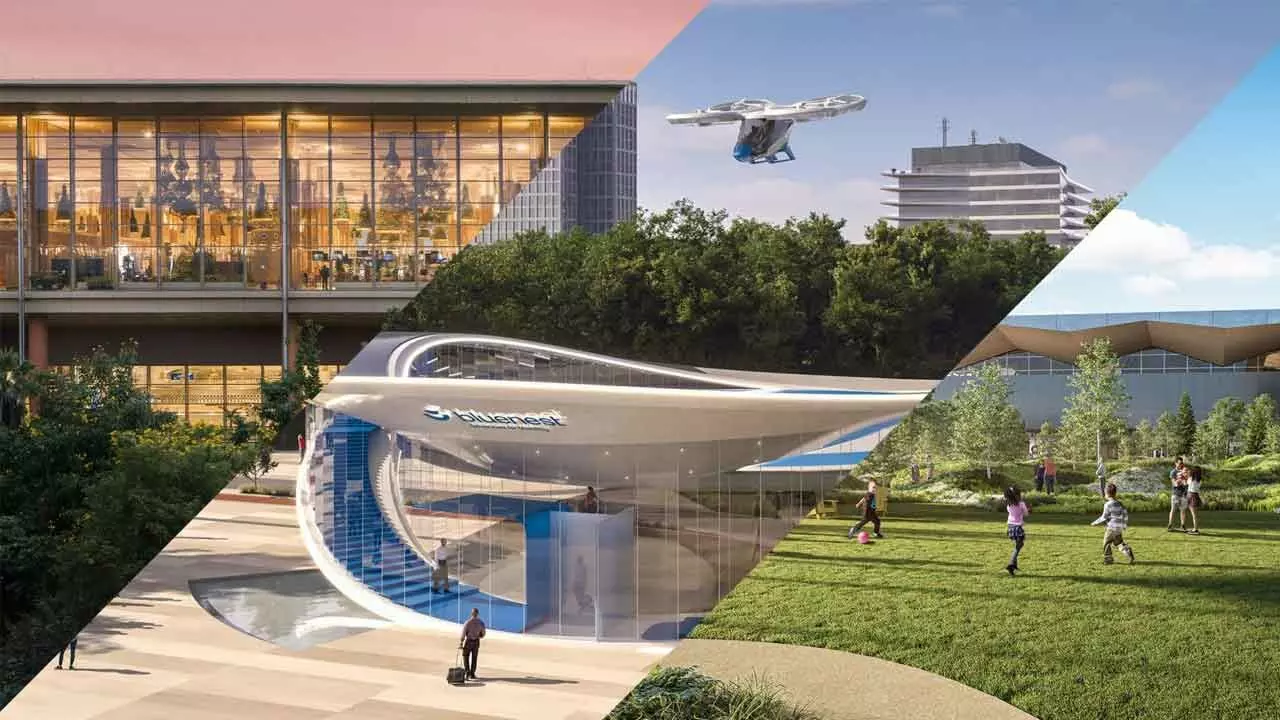Sustainable Future Airports Will Ensure Passengers A Smoother, Safer And More Enjoyable Travel
Those who build future global airport networks will decide how we will travel in the next 50 years
Sustainable Future Airports Will Ensure Passengers A Smoother, Safer And More Enjoyable Travel

Smart airports use advanced technologies like biometric screening and AI-driven threat detection to keep passengers secure. However, there are always privacy concerns to consider when dealing with large amounts of data
Airports are evolving rapidly in order to keep pace with the ever changing passenger needs and technological advancements. It is certain that from this year onwards, airports will intensify their focus on enhancing passenger experience through automation, eco-friendly design, and improved connectivity. As a result, money is flowing into airports!
Those who plan, design and build the future global airport network are poised to decide how we will travel in the next 50+ years.
Airports will now use smart hubs to improve efficiency and passenger convenience. Facial recognition will speed up check-ins and security, while robots assist with luggage and directions. Digital displays will provide real-time updates on gate changes and wait times. India’s strategic geographical location positions it as a potential major international aviation hub, capable of serving both eastern and western markets.
The mobile passport is a game changer for passenger experience improvements. Through that lens, let’s take a look specifically at the One ID initiative of IATA (International Air Transport Association). This is an ambitious, game changing take on streamlining the passenger journey. Built around biometrics, One ID enables contactless processing at airports and leverages advanced traveller information sharing, contactless processing and biometric-enabled identification. Looking to the next five years, Amsterdam Schiphol Airport intends to invest six billion Euro by 2029, while India is projected to invest 170 billion by 2030.
Seamless biometric travel is changing the way passengers move through airports. Instead of showing passports or boarding passes, travelers use facial recognition, fingerprints, or iris scans for check-ins, security, and boarding. This reduces wait times and enhances security with precise identity verification.
Passengers simply scan their biometric data, making travel less stressful. As technology advances, seamless travel is becoming the new standard.
The government aims to achieve one per cent SAF blending in international flights by 2027, escalating to five per cent by 2030, with plans to produce five million tonnes of sustainable aviation fuel.
Paying due attention to the present day standards, airports are making sustainability a priority. Many are turning to renewable energy, with wind turbines and solar panels becoming more common.
The key initiatives include electric ground vehicles, water recycling systems and eco-friendly terminal designs. Airports are also promoting public transport and low-emission travel options for the convenience of passengers.
With these changes, airports are leading the way toward a greener future while maintaining smooth and comfortable travel experiences.
Data analytics will help manage crowds and optimize flight schedules. Automation in lighting and climate control will enhance sustainability. As a result, airports will offer a smoother, more user-friendly experience for travelers worldwide.
Currently, Air India Group, after integrating Vistara, enjoys over 28 per cent market share, while IndiGo commands 60-62per cent, collectively controlling 90 per cent of the market.
Civil Aviation Minister Kinjarapu Ram Mohan Naidu has emphasized that such market concentration disadvantages travelers. He outlined three strategic initiatives to transform India’s aviation landscape: financial support mechanisms; state-level collaboration and price control strategies. These approaches endeavour to support struggling airlines, encourage state-driven airport development and prevent excessive airfare pricing.
Naidu’s comprehensive strategy includes active government monitoring of airline financial health, implementing the UDAN scheme to support unprofitable routes, and maintaining continuous dialogue with carriers. The ministry will urge state governments to reduce aviation fuel taxes and track airfare patterns to ensure market accessibility.
A smart airport uses technology to make the travel experience smoother, safer, and more enjoyable. This can include things like biometric security, AI-driven customer service, and automated baggage handling.
Yes, smart airports are generally very safe. They use advanced technologies like biometric screening and AI-driven threat detection to keep passengers secure. However, there are always privacy concerns to consider when dealing with large amounts of data.
Smart airports offer a range of benefits to passengers, including faster check-in and security processes, more efficient baggage handling, and personalized travel experiences. They can also help reduce wait times and make the overall travel experience more enjoyable.
Some of the challenges of smart airports include privacy concerns, cost, and potential job losses due to automation.
Airports need to address these challenges carefully to ensure that the benefits of smart technologies are enjoyed by all.

